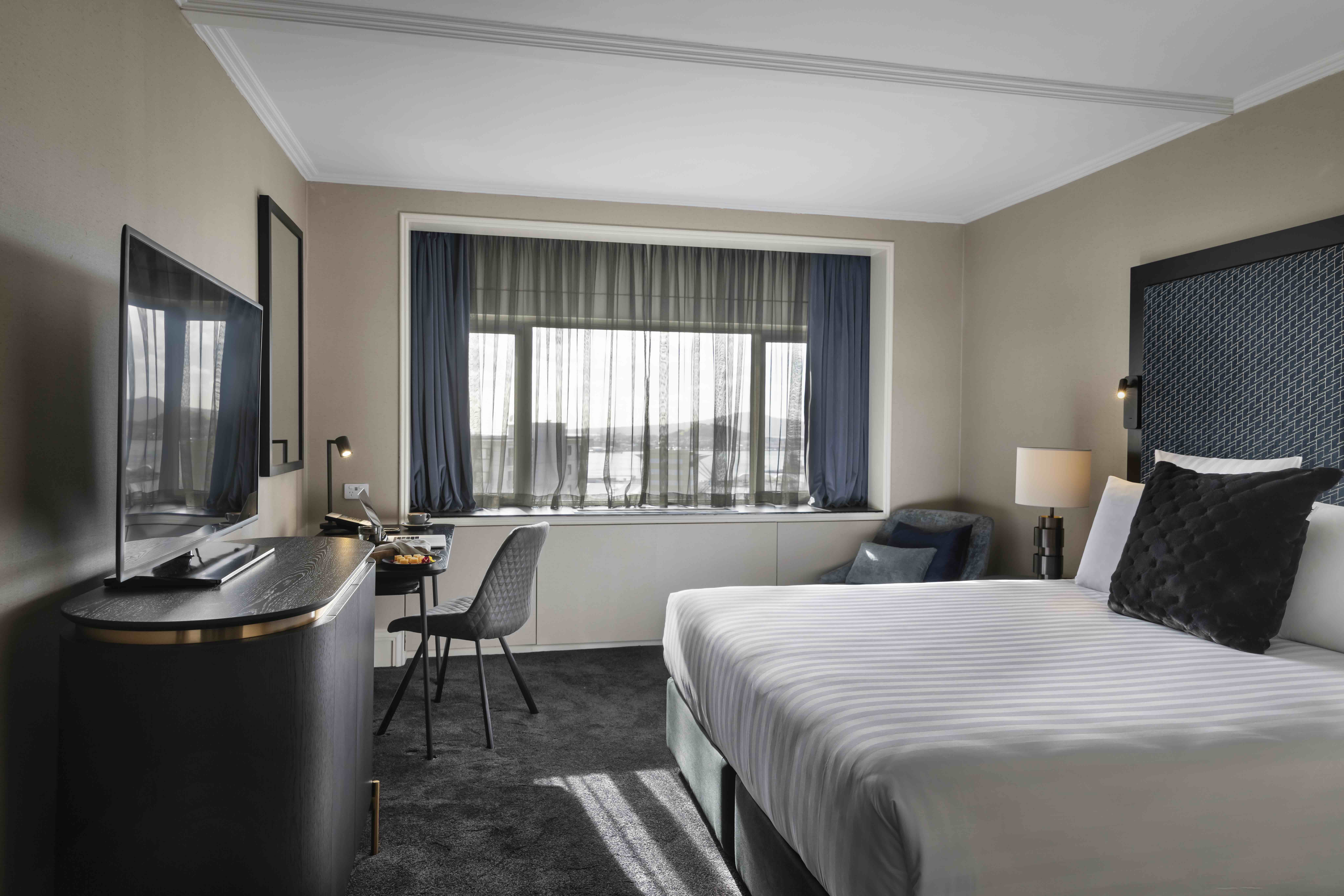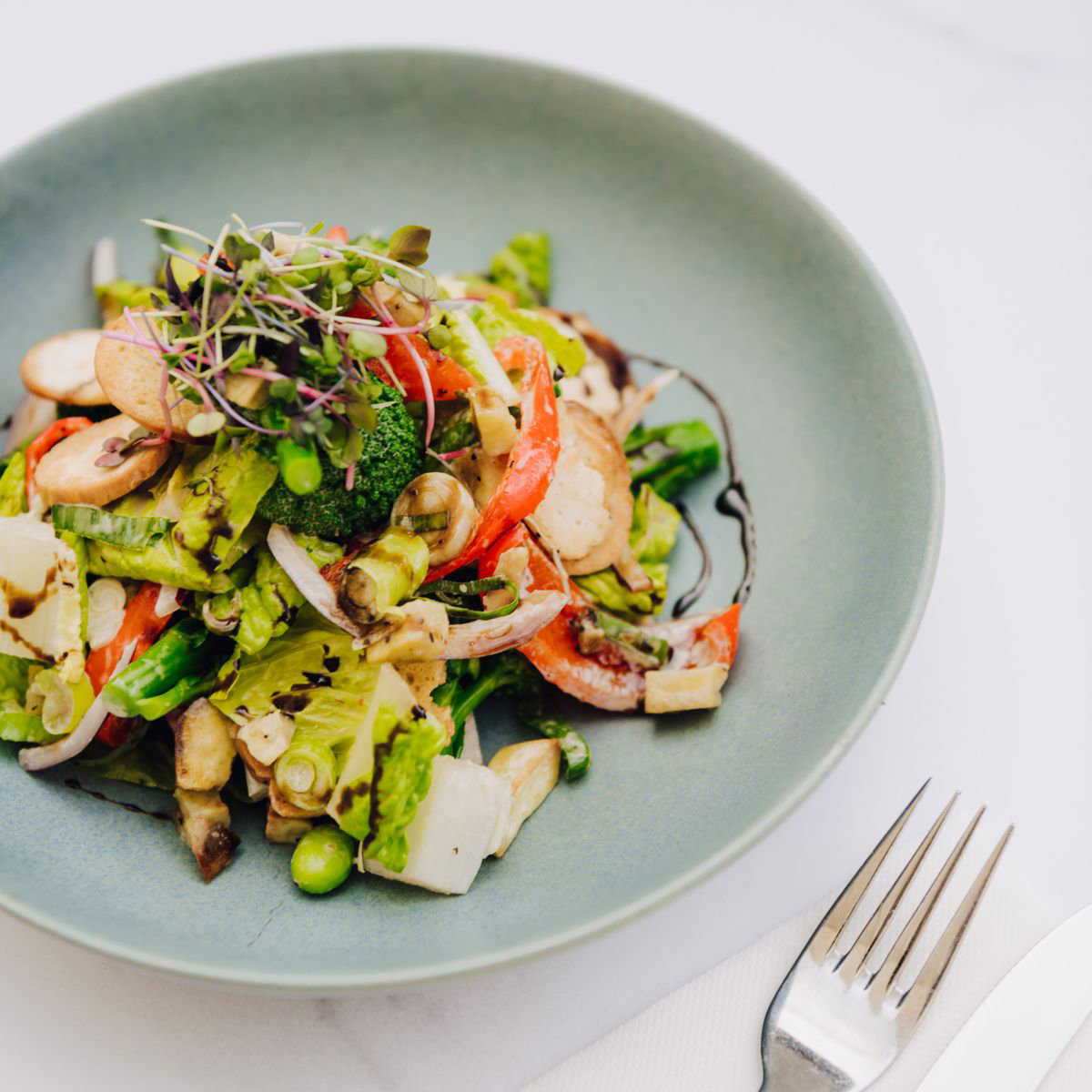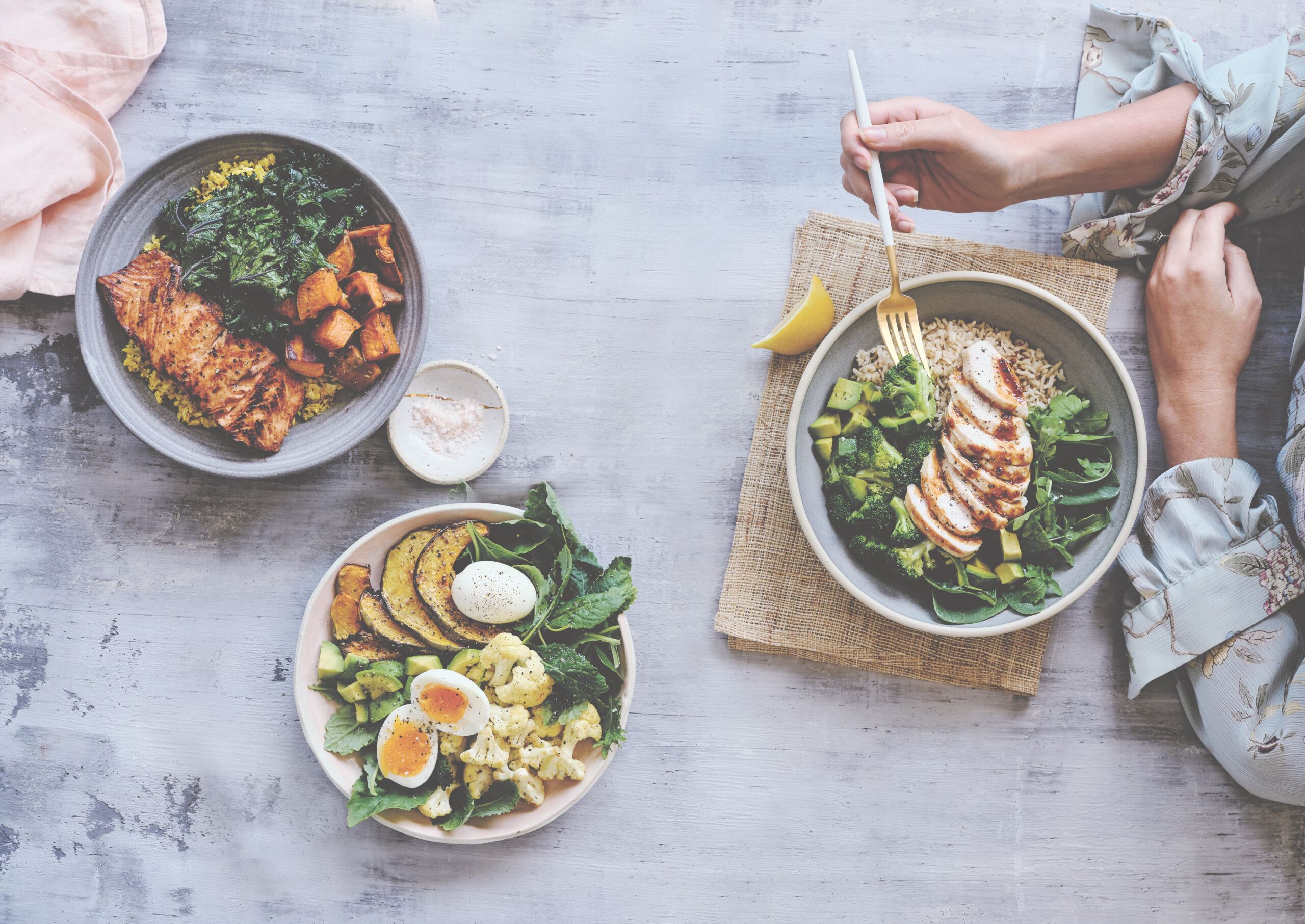Silently slipping through a canyon in a kayak at nightfall while beholding a natural light display is one of Waikato’s best-kept secrets.
Local kayak tour company Lake District Adventures runs small group tours to this magic spot from Lake Karapiro where thousands of glow-worms put on a nightly show.
The tour begins on the glassy waters of Lake Karapiro, best-known for spawning some of New Zealand’s champion rowers, and is an easy paddle over the historic sunken Horahora power station (it was dammed in 1947 for a new hydroelectric power station) and up Pokaiwhenua Stream.

It’s a picturesque paddle punctuated with commentary on the local history by experienced guide Steve Hastie and the whirring wings of papango (scaup), whose wings beat against the water like tiny helicopter blades.
The tour begins in daylight and just before dusk we settle on the riverbank. Here we enjoy savoury and sweet snacks, and a warming non-alcoholic hot toddy as we await nightfall, before hopping back into our kayaks and allowing the gentle current to carry us slowly past the glow-worm cities lining the banks. On a clear night the stars add to the magic – with lights twinkling all around.
What’s also incredible is the adventure is just a 15-minute drive from Cambridge.
Also close to Cambridge is Sanctuary Mountain Maungatautari (35-minute drive), another other-worldly experience. Other-worldly because this stand of ancient forest allows one to gaze upon towering trees that missed the swinging axes of the early settlers – a rare sight these days.
It has been recognised as a reserve since 1912 and today a 47km pest-proof fence protects some of New Zealand’s most at-risk wildlife including kōkako, North Island brown kiwi, hihi, takahē and tuatara.
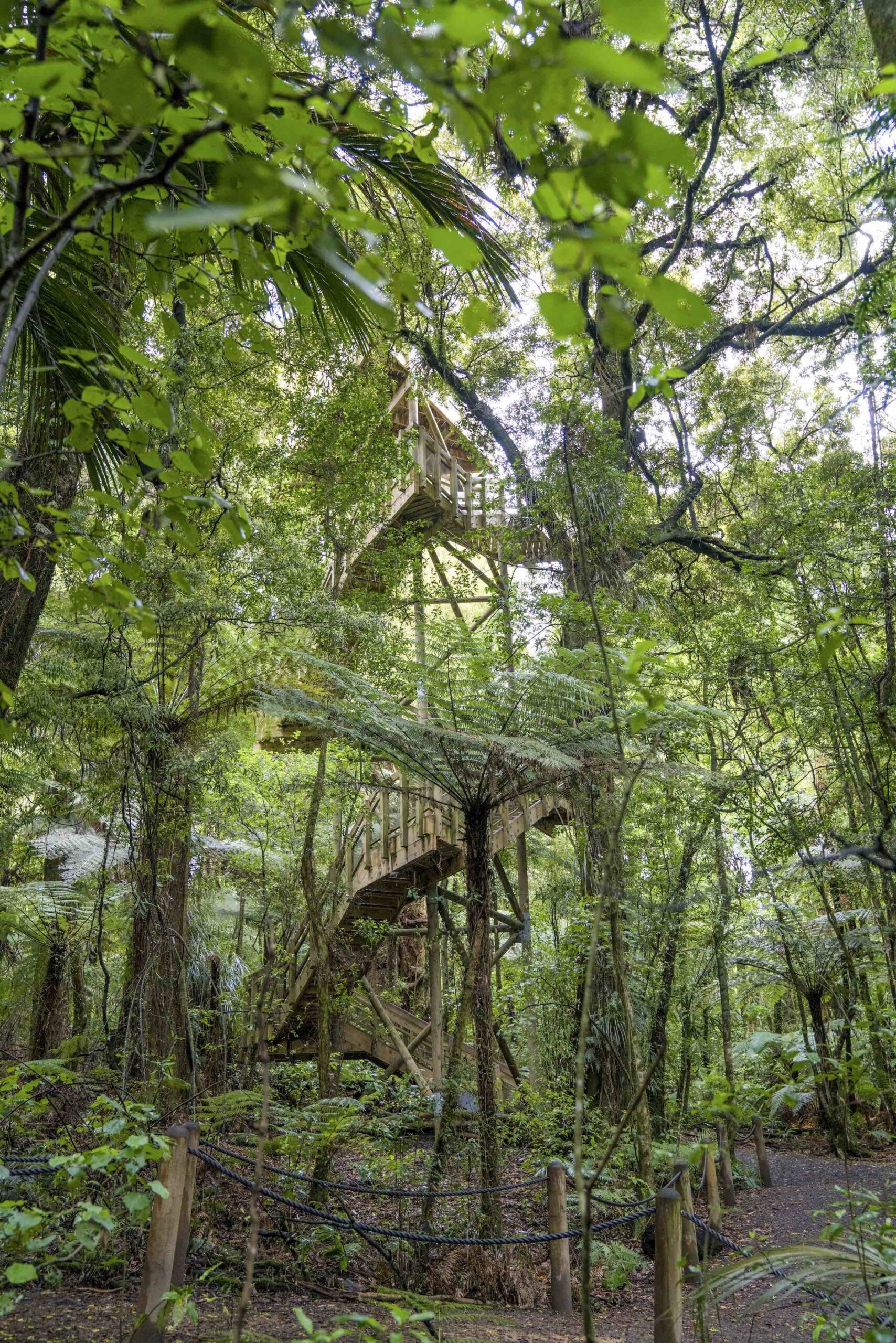
Walking through this mighty forest one can’t help but look up at the canopy of rimu, rātā and tawa, though keeping your eyes at forest level also rewards. Along the trail a Kiwi hole at the base of a tree was pointed out by my guide. Kāka swooped in to entertain with a tightrope walk display along forest vines, and tīeke (saddleback) song filled the air. I also saw the biggest punga koru fronds I’ve ever seen. I’m looking forward to a return visit along the Rātā Track, where I’m told kōkako have made their home.
There are 5km of trails to explore at Sanctuary Mountain, and a forest tower to climb if you want to get higher up to the canopy.
For more jaw-dropping outdoor experiences a visit to Hamilton Gardens is mandatory. These are not your typical botanical gardens but enclosures that take you on a time-travelling world tour – from India, China, Italy and Japan to Tudor times and surrealist spaces. The gardens are free to visit but it is well worth paying for a tour as the stories and symbolism hidden in these gardens bring them even more to life.

A recent addition to this sprawling wonderland is the Picturesque Garden, which pays tribute to the 18th century movement for wilder spaces. It also celebrates Mozart’s Magic Flute and it’s filled with Masonic symbols and Egyptology referencing the opera, and has a view over the mighty Waikato River.
The Surrealist Garden is also new and inspired by the Surrealist movement. One enters through a tiled ‘wonky’ hallway lined with gilt-framed garden scenes, and upon entering you are greeted by giant ivy covered ‘Trons’ with moving mechanical branches. A giant door in the walled garden is a popular Instagram spot for visitors who snap each other jumping to try and reach the doorhandle.
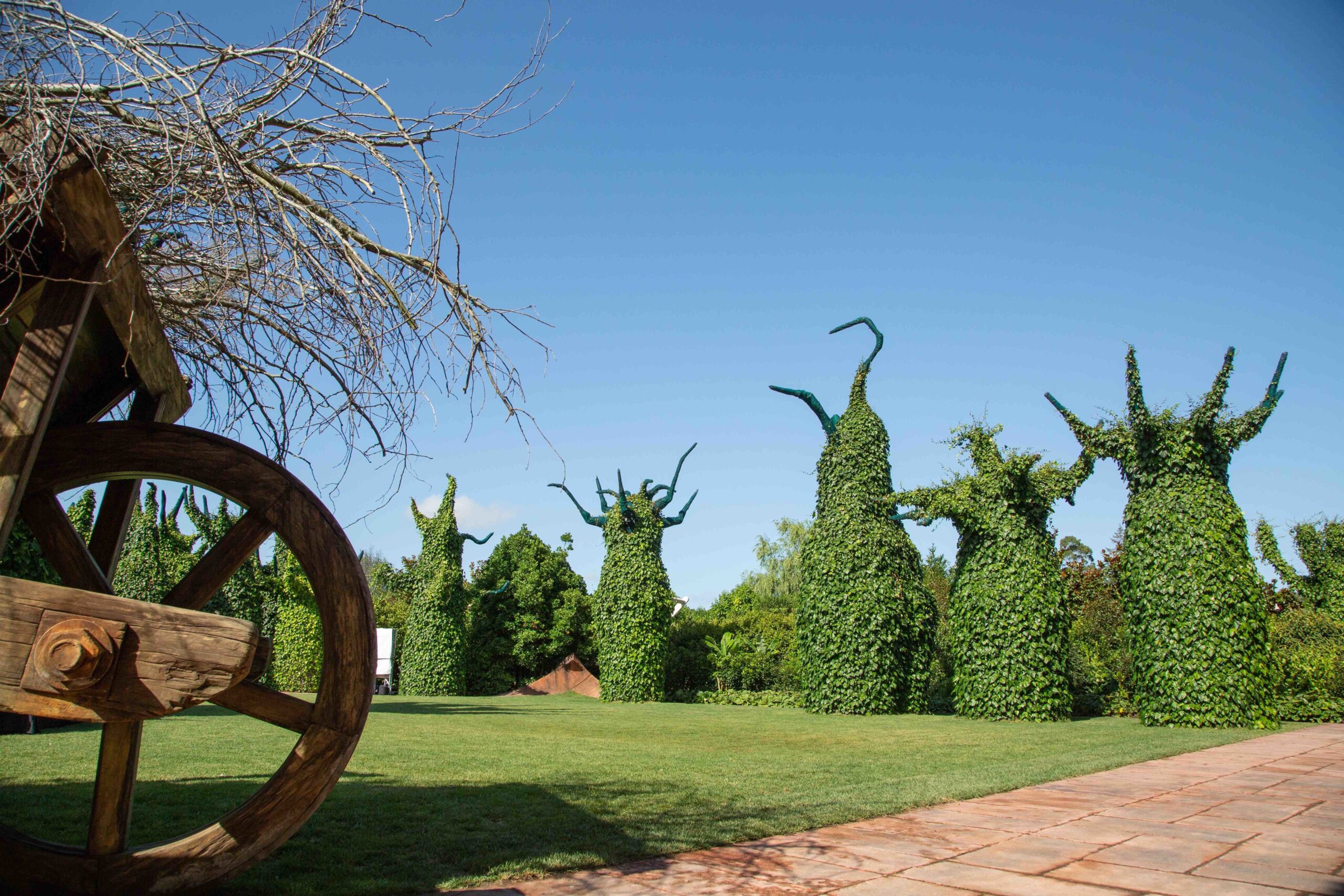
The Hamilton Gardens also do good. Produce from the Kitchen Garden and Te Parapara Garden (which cultivates kūmara) is sold to the on-site café and the remainder is donated to eco climate project Kaivolution, which distributes food to the needy.
You need a car to explore Waikato. Most things here are spread out across this ancient river basin and it is an average 15 to 20 minute drive
to anywhere.
When you begin to explore, it is also remarkable how many lakes there are in the region. Driving through the pretty village of Ōhaupō you’ll discover the peat lake district. Peatlands take many thousands of years to develop and here they are a valuable habitat for many birds, plants and aquatic animals, including whirligig beetles and freshwater jellyfish.
While you’re here, Ōhaupō’s TreeChurch is worth a photo stop and some quiet contemplation.
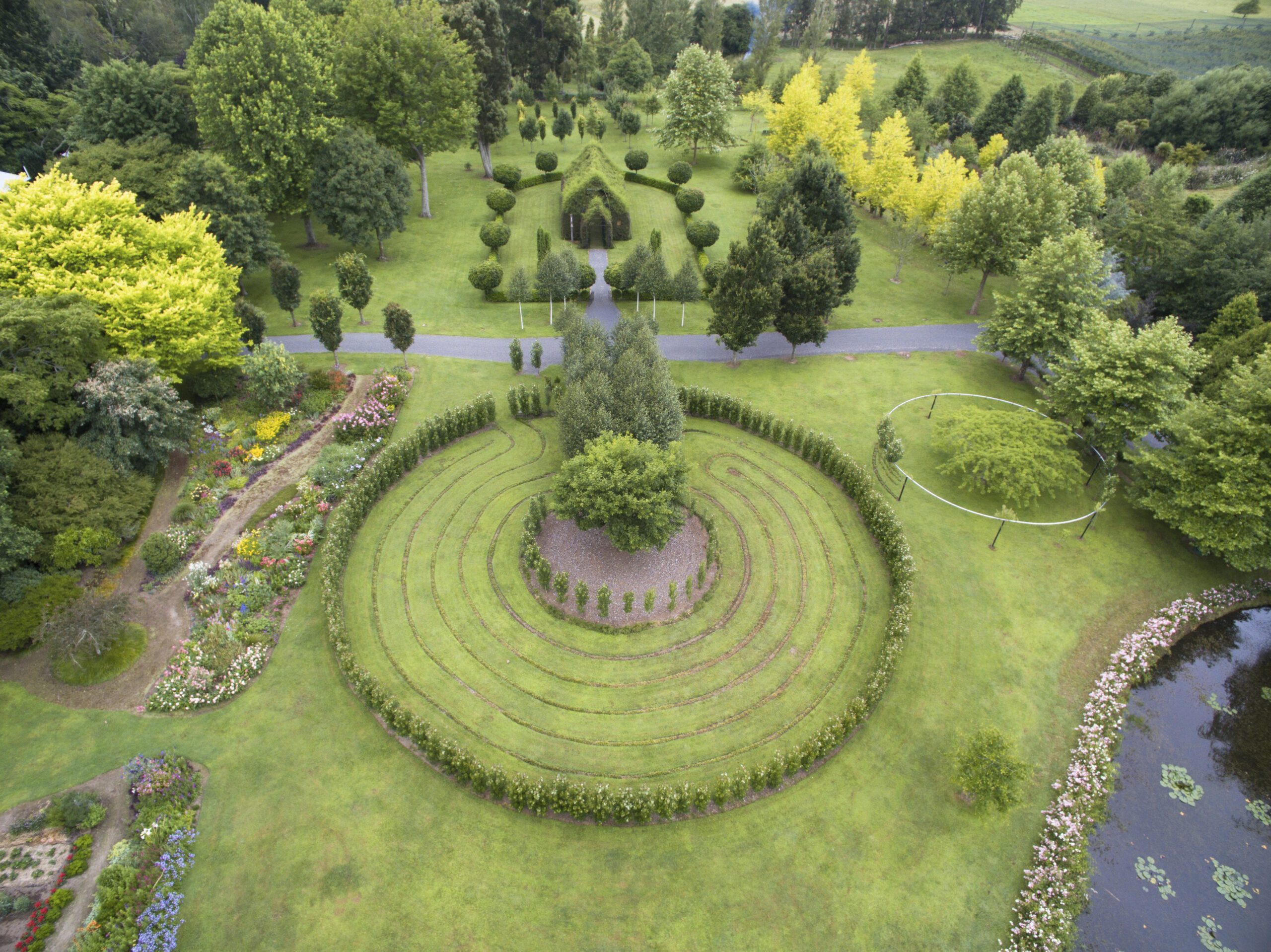
The church is a living, breathing structure designed and built by Barry Cox. There’s also a Labyrinth Walk here. It was initially created as a private garden but opened to the public in 2015. Check the opening times before you visit as TreeChurch is closed in the winter months.
Nearby heritage town Cambridge is a beautiful spot with possibly the country’s best antique stores on the main street, and lots of great eateries. Cambridge is also the jumping-off point for Hobbiton tours, which are a great day out even if you’re not a Tolkien fan.
A great place to stay in Cambridge is earth-conscious Hidden Lake Hotel beside Te Koutu Lake (though you can’t see it from the rooms because it’s hidden). However, you can walk around the lake through the picturesque Te Koutu Lake Domain. And of course, Lake Karapiro is a short drive away.
New eateries have also sprung up beside Hidden Lake Hotel, with Koi (Indian cuisine) a delicious addition to the local restaurant scene.
Luxury boutique Henley Hotel is also in the neighbourhood. In September its cherry blossom trees are in full bloom and a spectacle to behold.
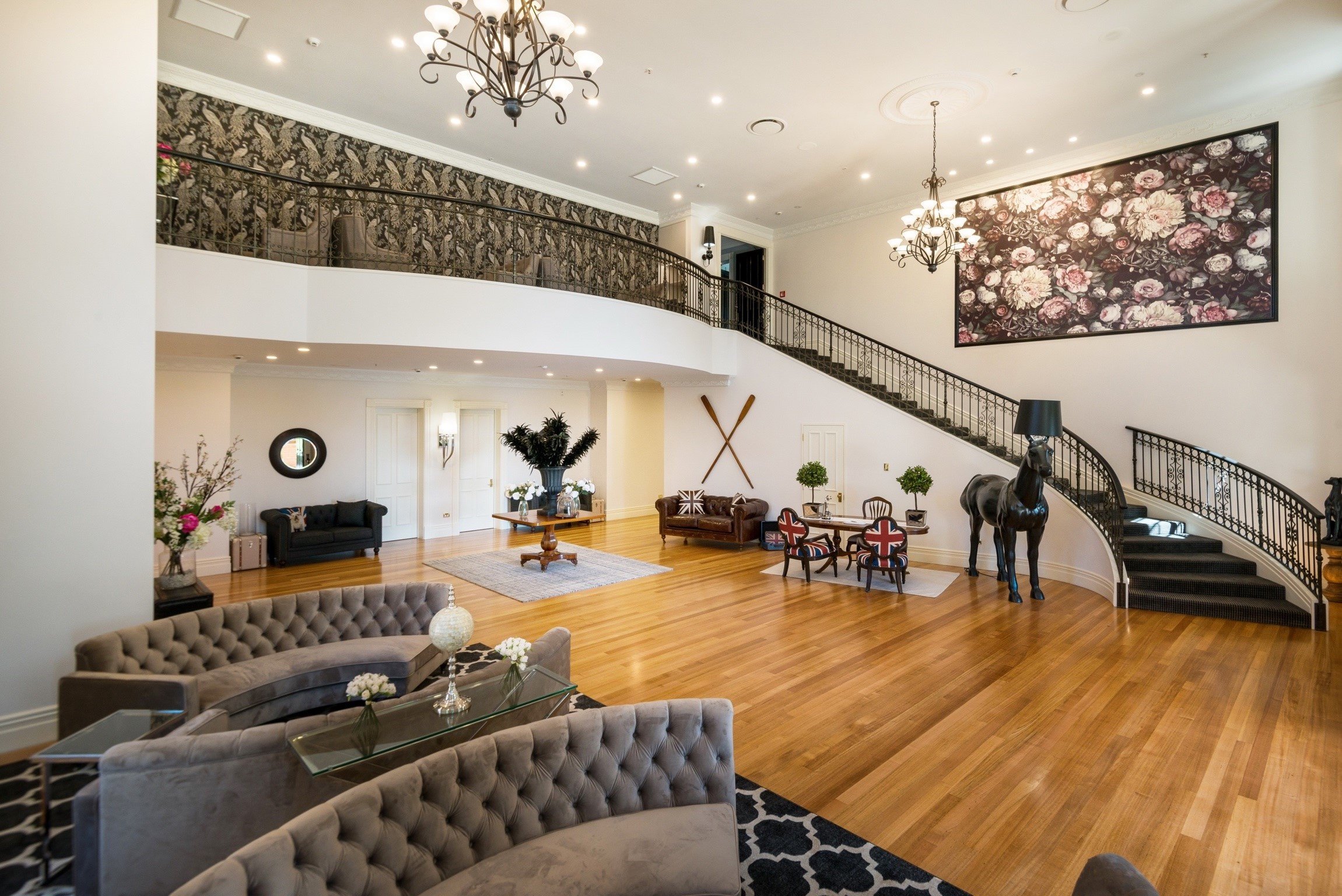
For most of the year the lake is filled with pink waterlilies and come summer the rose gardens will be full of colour. There’s an indoor pool with an outdoor view; mini cinema; gin bar; and plenty of places to relax and/or enjoy the in-house dining experience. The ‘manor’ was built as a private home in 2000 with seven rooms and now has 14.
The rooms, amenities and grounds at Henley are so fantastic you won’t even want to or be in need of leaving the estate while you are there.
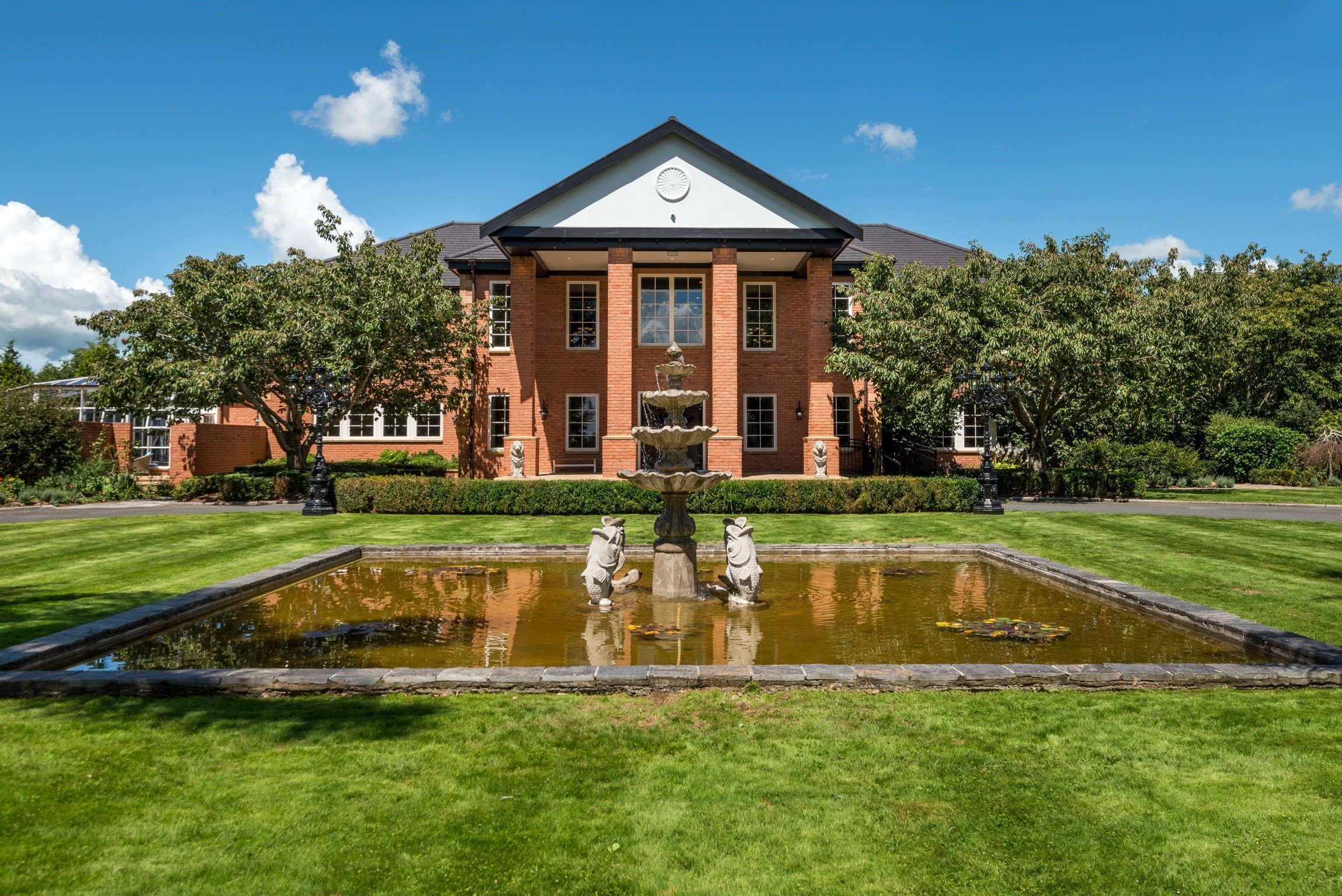
When it comes to top-notch tasting experiences Zealong Estate is hard to surpass, especially if you book a Discover High Tea Experience. The tea ceremony is indeed something special, as you learn how to truly appreciate and taste tea. No milk please. And when you taste these organic teas grown on the estate you understand why.
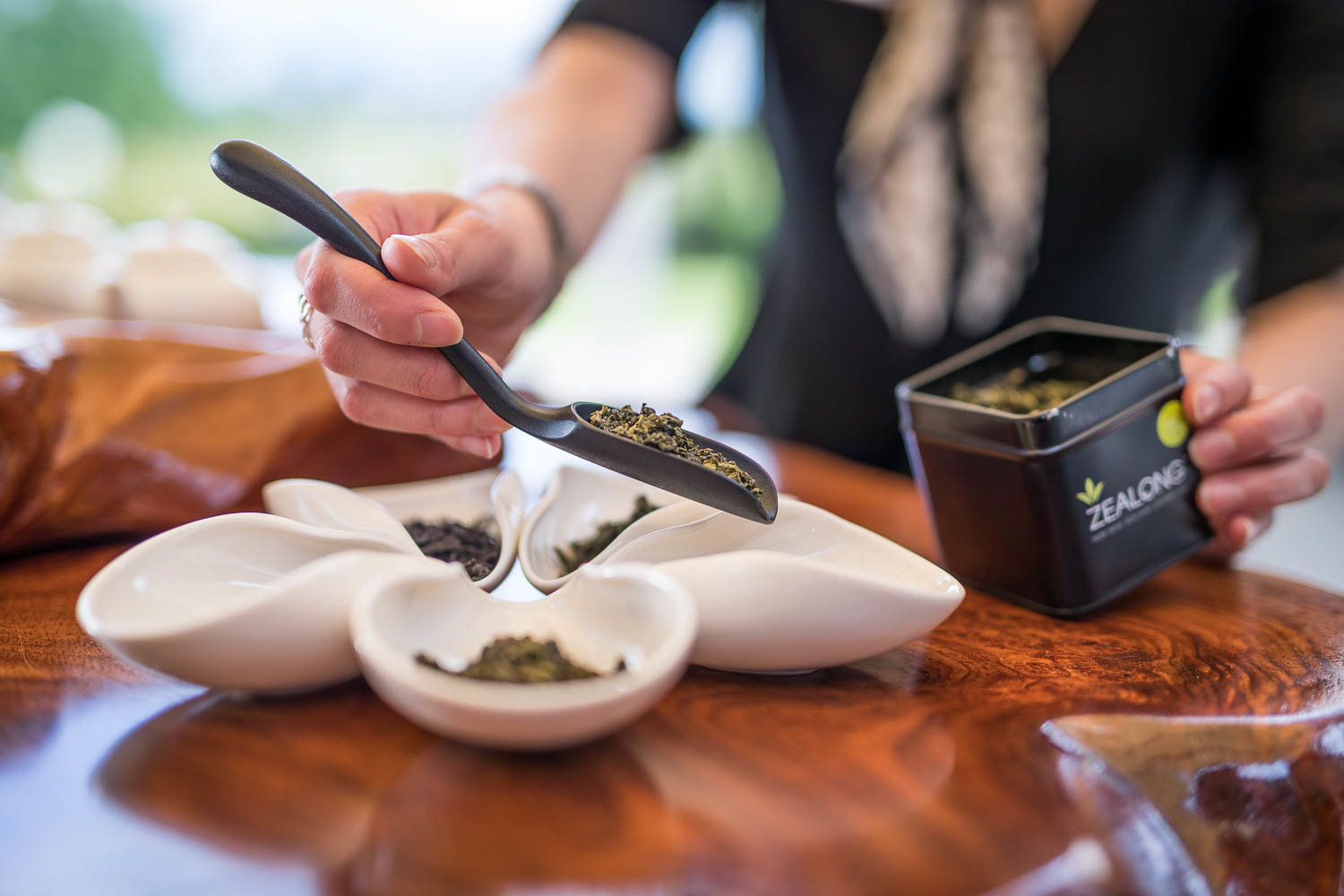
Afterward, enjoy a scrumptious high tea overlooking the tea plantation. There is something extra special about this experience when the tea you are drinking can be traced to a particular row!
The Zealong story is remarkable – it now sells tea to China. Founder Vincent Chen got the idea to plant tea in the Waikato when he noticed that camellias grew well here – tea is a kind of camellia. Starting with 130 tea cuttings and a whole lot of hard work, Zealong is now an award-winning estate that produces teas that are 100 per cent certified organic, traceable and produced without compromise. Most is loose leaf oolong tea, but any teabags are made from biodegradable corn starch. After a visit to Zealong, you’ll have a whole new appreciation of tea, and the Waikato.
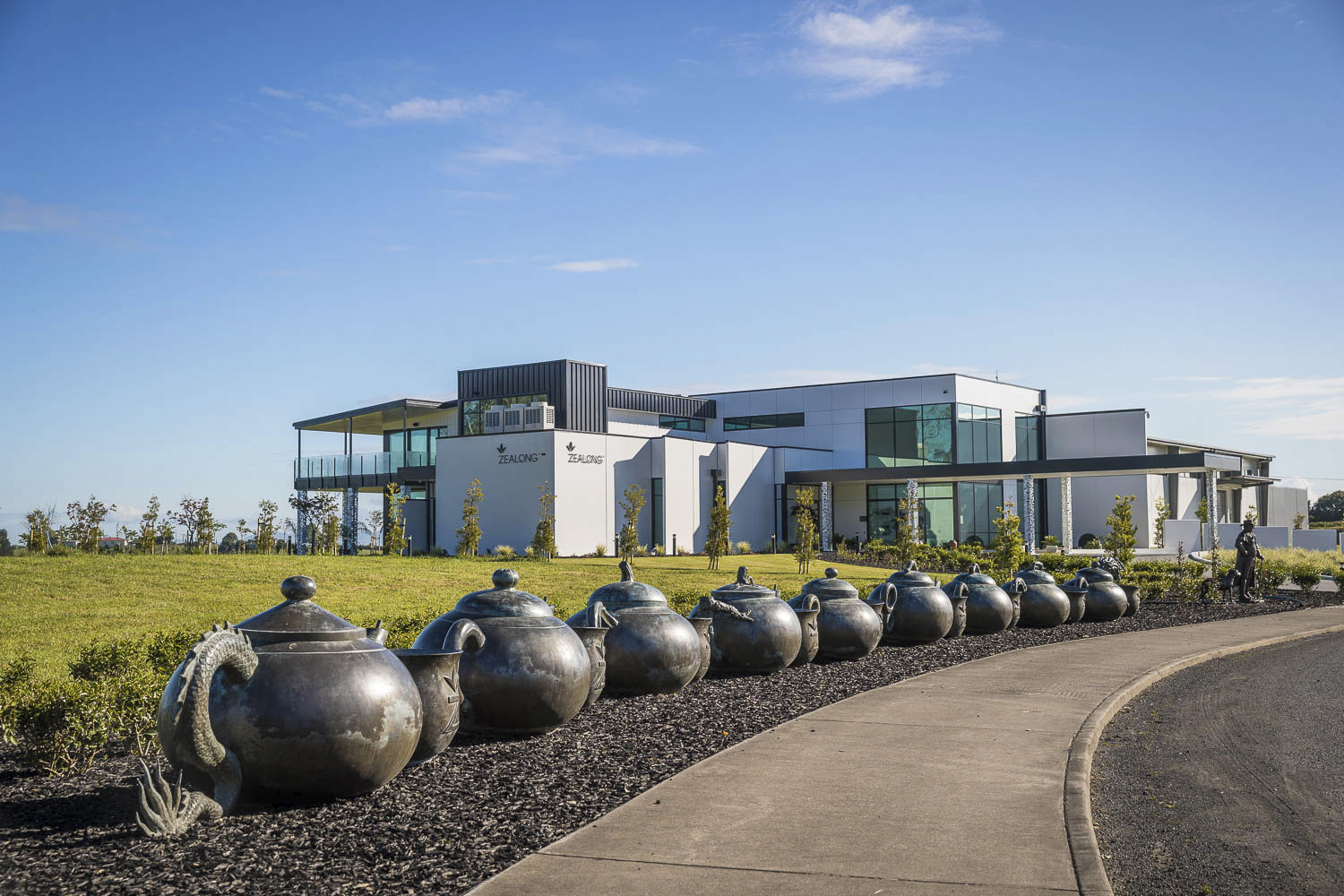
Waikato Museum sits on the banks of the Waikato River and has 13 galleries, which display more than 25 new exhibitions and 100 public events annually. Here this busy museum’s passionate curators continually bring the region to life.
Current exhibition, Shaping Hamilton Huringa Kirikiriroa, tells the story of how the city has been shaped by many layers of human intervention.
“Often when people think about the past they think of it as being fixed and something that is unchangeable and I wanted to draw on the fact that these were just everyday people making everyday decisions,” says curator Nadia Gush. “That’s how we ended up with a place that looks like Hamilton does because individual people made decisions.”
The exhibition invites visitors to place themselves in the shoes of those decision-makers at different voting stations. For example, ‘Would you sign the Treaty?’ “Based on the information that was available to people living here at the time, what would you do?” asks Gush. “This is a case where you are presented with a copy of the Treaty, which is not in Māori and yet you can’t read English so it comes down to trust. Most people say ‘no’ to that one.”

Another question is ‘Would you name this place Hamilton?’, which relates to the contemporary controversy over whether we should retain colonial heroes.
“It is another example that comes down to human sentiment because the guy that did name this place Hamilton named it after his friend,” says Gush. “There was no other reason other than the fact that it was his friend who had recently died so it’s like a memorial to friendship, which is nice, but it’s not a great reason to name a city.”




